How to Use the Breast Cancer Recurrence Risk Calculator: using the Breast Cancer Recurrence Risk Calculator is simple and straightforward. Follow these steps to determine your risk:
Select Post Menopause Status:
- Choose “Yes” or “No” to indicate if you are post-menopausal. This selection will determine which set of questions you need to answer.
Fill in the Required Details:
- If you selected “Yes” for post-menopause, provide information such as early-stage status, hormone receptor status, number of affected lymph nodes, tumor size, cancer grade, and your age at the start of hormonal therapy.
- If you selected “No” for post-menopause, provide details including your age, ethnicity, number of births, family history of breast cancer, history of benign breast disease, use of oral contraceptives, history of thyroid disease, and age at menarche.
Calculate Risk:
- Once you have filled in all the required details, click the “Calculate Risk” button.
View Results:
- Your risk score and corresponding risk category will be displayed in the results section.
This tool helps you understand your risk of breast cancer recurrence based on various factors. Always consult with a healthcare professional for personalized medical advice.
Results
Note that this calculator is not meant to replace professional medical advice. Always consult a qualified medical doctor for personalized medical advice.
Author Bio

Idris Ya’u
BSc Botany, MSc Biology
Studies Behind this Breast Cancer Recurrence Calculator
Medroxyprogesterone Use and Breast Cancer Risk
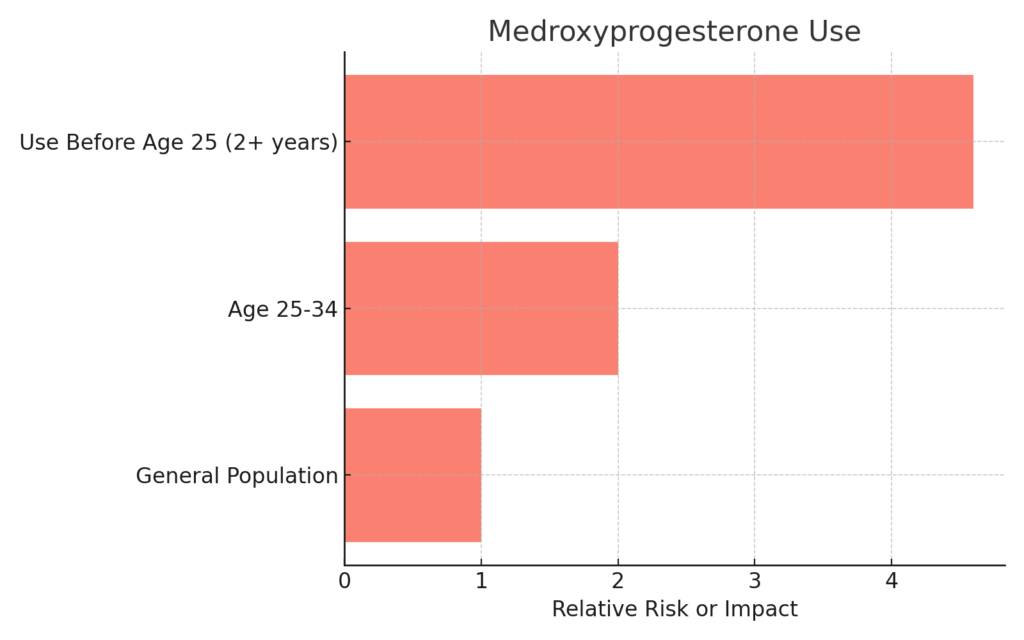
The study found that the overall relative risk of breast cancer associated with medroxyprogesterone use was 1.0, suggesting no increased risk for the general population.
However, for women aged 25-34, the relative risk was higher at 2.0, and particularly elevated for those who used the drug for six years or longer. Additionally, women who used it for two years or longer before age 25 had a significantly increased risk (relative risk 4.6).
These findings suggest that while medroxyprogesterone may not increase breast cancer risk overall, it could elevate the risk in younger women with prolonged use.
Learn more here.
Ethnic and Racial Disparities in Breast Cancer Outcomes
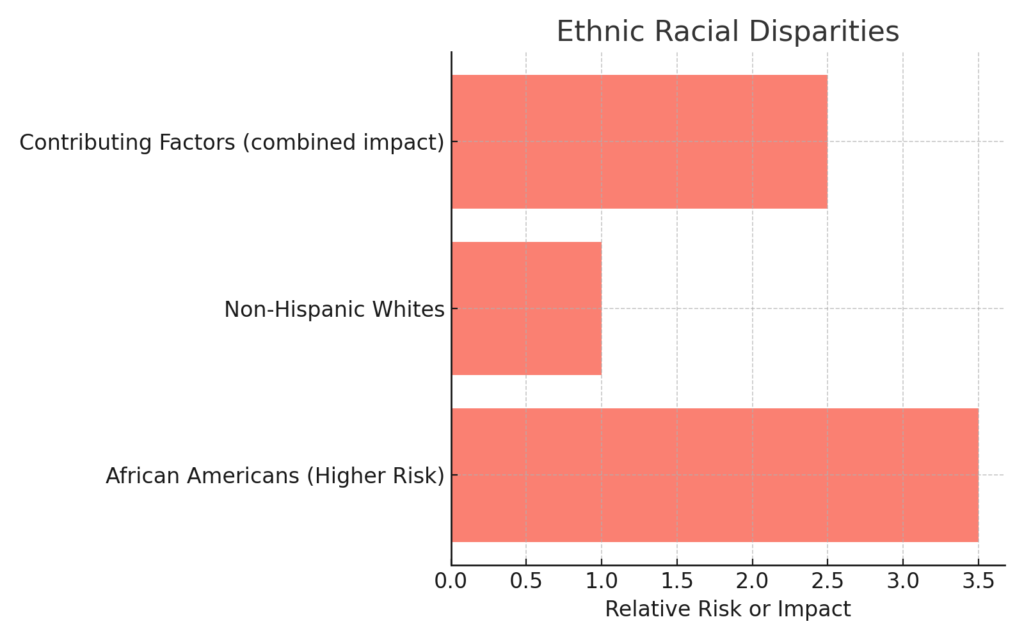
Survival outcomes for breast cancer vary significantly across different ethnic and racial groups, with African Americans often experiencing poorer outcomes compared to non-Hispanic whites.
Factors contributing to these disparities include differences in tumor biology, genetic ancestry, socioeconomic status, and access to healthcare. Socioeconomic disadvantages can lead to late cancer diagnosis, lower adherence to treatment, and lifestyle factors that contribute to a higher allostatic load and more aggressive cancer features.
Addressing these disparities requires a comprehensive approach, including improving cancer literacy, access to healthcare, and understanding the genetic and environmental factors influencing breast cancer across diverse populations.
Learn more here.
Oral Contraceptives and Breast Cancer Risk
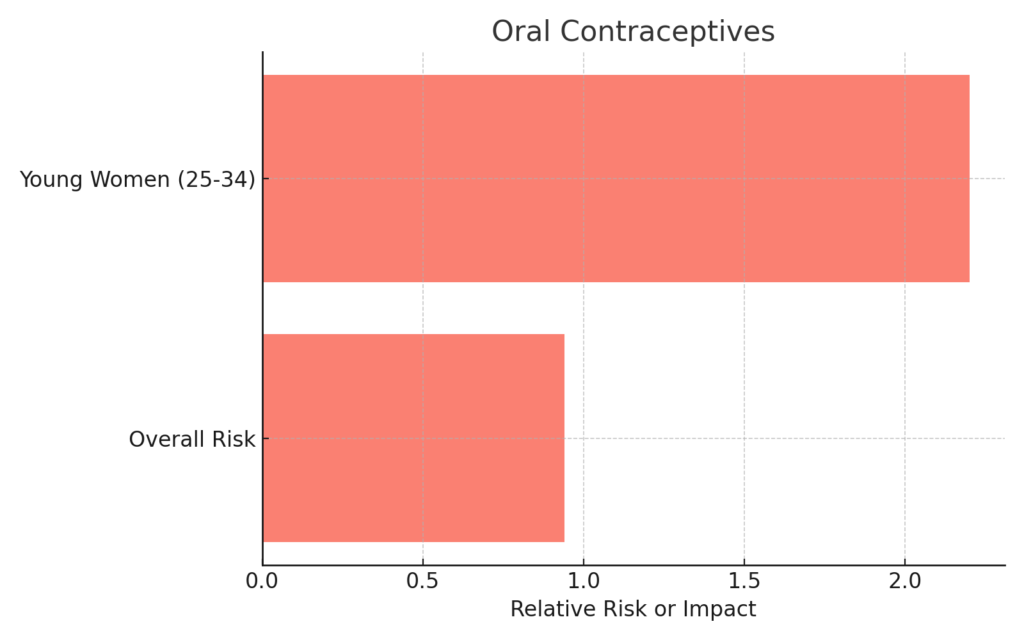
A case-control study in New Zealand showed that the use of oral contraceptives did not significantly increase the risk of breast cancer overall, with a relative risk of 0.94.
For women aged 25-34 at diagnosis, the relative risk was 2.2, indicating a potential increased risk, though this estimate had a wide confidence interval. Importantly, the study found no adverse effect on breast cancer risk based on the duration of use, age at first use, or use before the first pregnancy.
This evidence suggests that oral contraceptives do not significantly elevate breast cancer risk, particularly given their high prevalence of use.
Learn more here.
Breast Cancer Mortality and Incidence in Māori and Pacific Populations
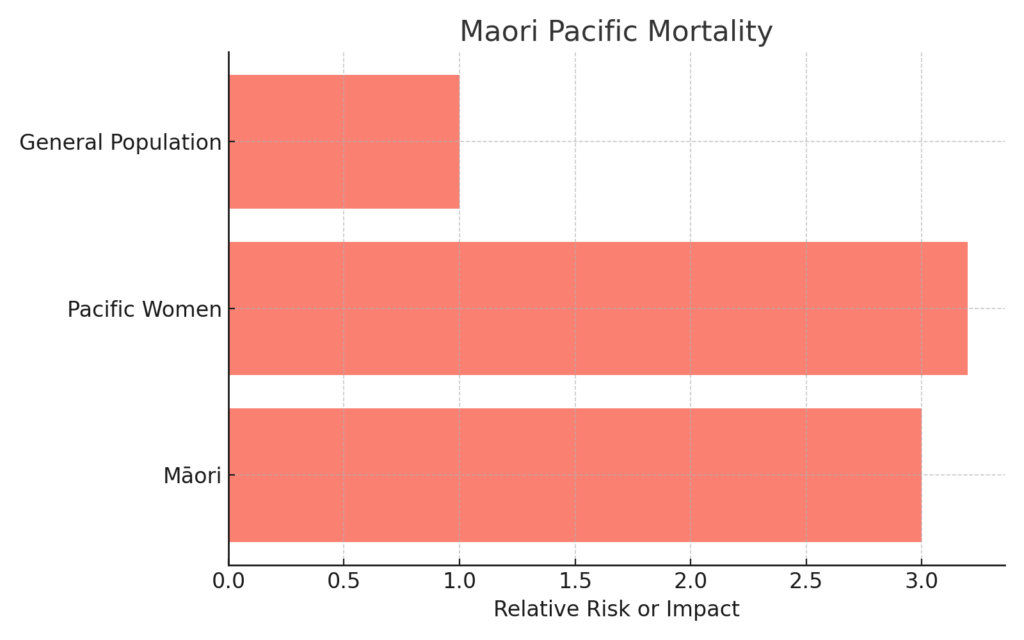
Between 1981 and 2011, breast cancer contributed increasingly to excess mortality among Māori and Pacific females compared to European/Other populations in New Zealand.
The absolute and percentage increases in breast cancer mortality highlight significant ethnic disparities, driven by factors such as lower access to quality healthcare, higher prevalence of obesity, and other lifestyle-related risks.
Addressing these inequalities requires targeted public health interventions, enhanced screening, and improved healthcare access to mitigate the emerging drivers of cancer disparities.
Learn more here.
World Cancer Report on Prevention

The World Cancer Report emphasizes that up to 40% of cancers are preventable through lifestyle modifications such as avoiding tobacco, maintaining a healthy diet, engaging in regular physical activity, and preventing infections like hepatitis B and HPV.
Yobacco remains the leading preventable cause of cancer deaths, while early detection and prompt treatment are crucial for improving outcomes.
Disparities in cancer prevention and control are significant, particularly in lower-income countries, necessitating a comprehensive approach that includes multi-sectoral collaboration, research, and investment in prevention strategies to reduce the global cancer burden.
Learn more here.
Long-term Risk of Breast Cancer After Benign Breast Disease
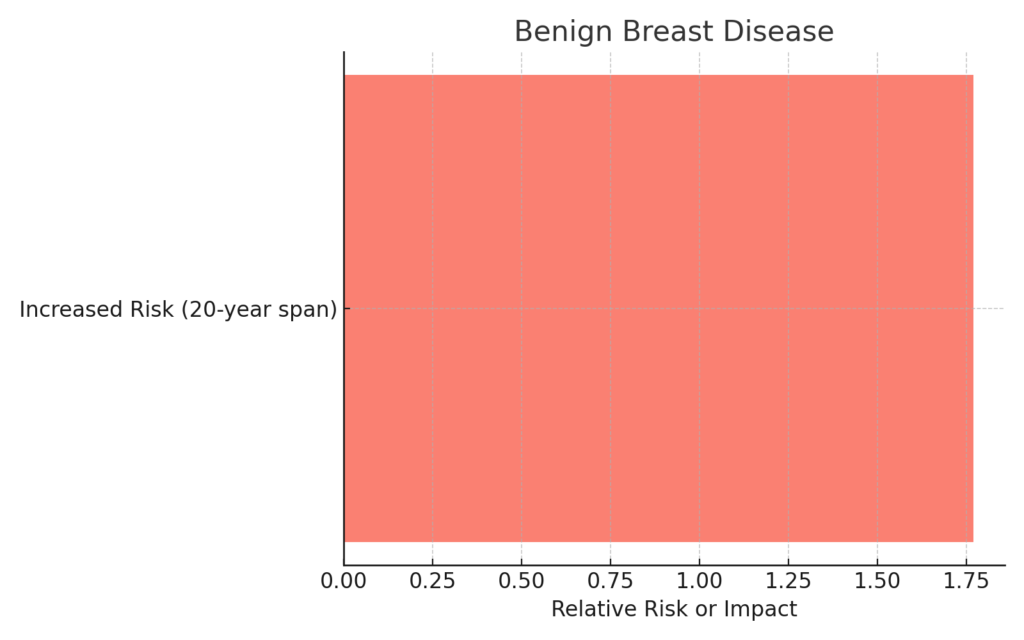
Analysis of data from 778,306 women in Spain revealed that those with a history of benign breast disease had a 1.77 times higher risk of developing breast cancer compared to those without.
This increased risk persisted for up to two decades, highlighting the importance of closer surveillance and personalized screening for women with benign breast disease.
These findings suggest that benign breast disease is a significant long-term risk factor for breast cancer, warranting targeted prevention and monitoring strategies to improve early detection and outcomes.
Learn more here.
HER2 Breast Cancer Recurrence Risk Calculations
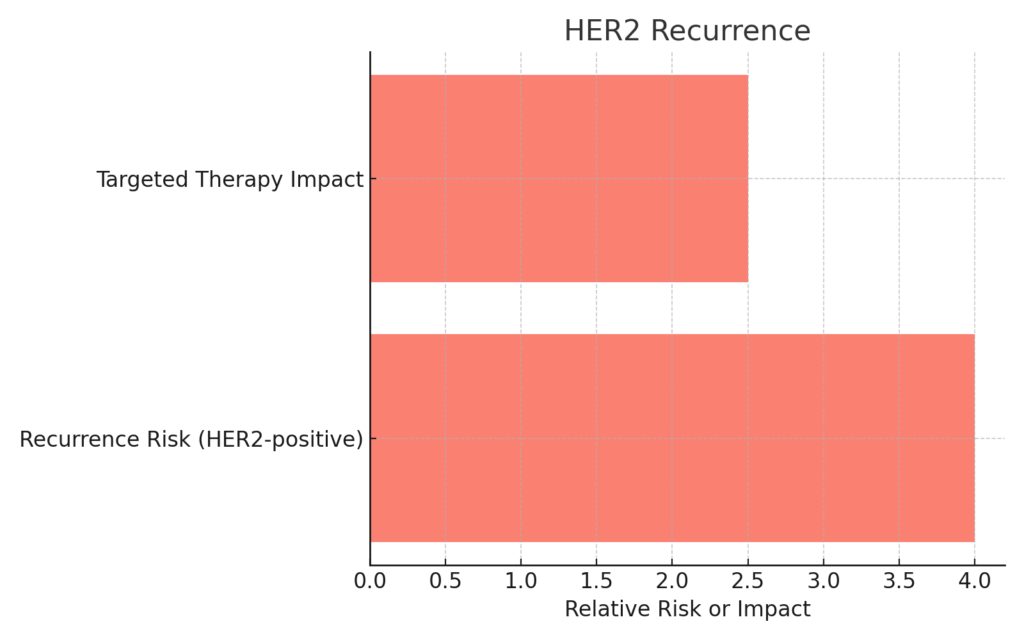
Human Epidermal Growth Factor Receptor 2 (HER2) positive breast cancer tends to grow more aggressively and has a higher likelihood of recurrence compared to HER2-negative cancers. HER2 status significantly influences treatment plans, with targeted therapies like trastuzumab (Herceptin) and pertuzumab (Perjeta) improving outcomes and reducing recurrence rates.
Factors such as tumor size, lymph node involvement, and the patient’s response to initial treatments are critical in calculating recurrence risk.
Personalized risk assessments should be conducted by oncologists using tools that incorporate these variables to guide therapy decisions and surveillance strategies. For more details, read this study.
Grade 3 Breast Cancer Prognosis Calculation
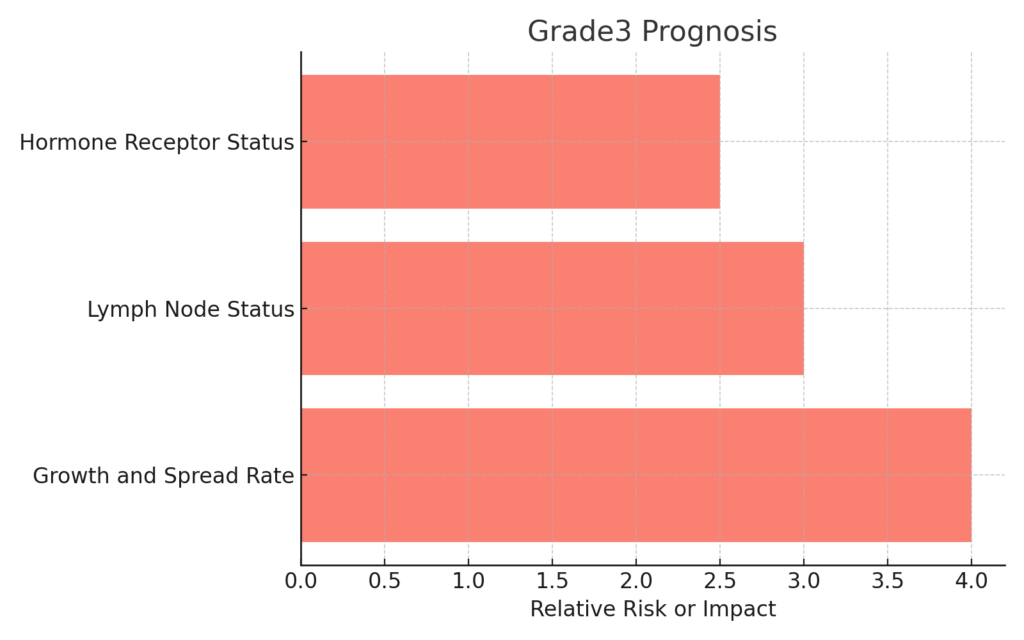
Grade 3 breast cancers are characterized by poorly differentiated cells that grow and spread more aggressively than lower-grade cancers. The prognosis for Grade 3 breast cancer depends on multiple factors, including tumor size, lymph node involvement, hormone receptor status, and HER2 status.
Generally, higher-grade cancers have a poorer prognosis and higher recurrence rates, but advancements in chemotherapy, hormonal therapy, and targeted therapies have improved survival outcomes.
Oncologists use staging systems, histopathological evaluation, and predictive models to estimate prognosis and tailor treatment plans accordingly.
For details, refer to here and here.
Adjuvant Online Breast Cancer Calculation
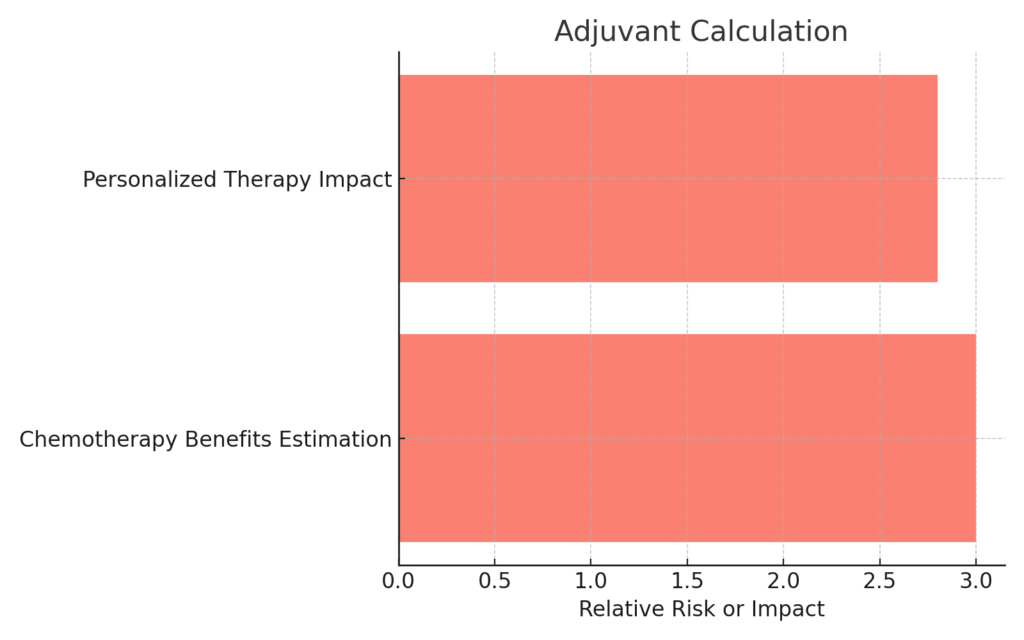
Adjuvant! Online was a widely used tool that helped clinicians estimate the benefit of adjuvant therapies (such as chemotherapy, hormonal therapy, and trastuzumab) for individual breast cancer patients based on their specific clinical and pathological characteristics.
While the tool is no longer available, its methodology underscored the importance of personalized medicine, taking into account factors like age, tumor size, grade, lymph node status, hormone receptor status, and HER2 status to predict outcomes and guide treatment decisions. Contemporary tools and models continue to build on this approach to provide accurate prognostic information.
For details, refer to here and here.
Estrogen Positive Breast Cancer Recurrence Rates
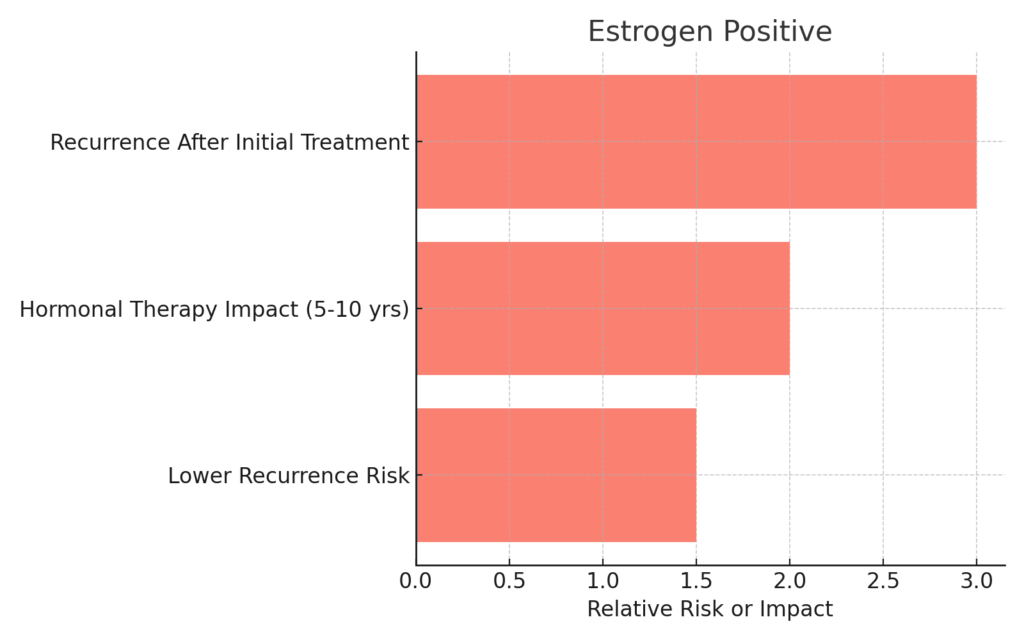
Estrogen receptor-positive (ER+) breast cancer typically has a better prognosis and lower recurrence rates compared to ER-negative cancers. However, ER+ cancers can recur many years after initial treatment. Adjuvant hormonal therapies, such as tamoxifen and aromatase inhibitors, are effective in reducing recurrence risk and are often prescribed for 5-10 years post-treatment.
The risk of recurrence is influenced by factors such as tumor size, lymph node involvement, and whether the cancer is also HER2 positive.
Regular follow-up and adherence to hormonal therapy are crucial in managing long-term recurrence risks for ER+ breast cancer patients.
Read this and this study for details.
Related Calculators:
- Luteal phase calculator
- BBT Temperature Converter
- Birth control calculator
- Bishop Score Calculator
- Due Date Calculator
- Breast Cancer Recurrence Risk Calculator
- Breastfeeding Calories Calculator
- Clomid Ovulation Calculator
- Conception Calculator
- Due Date Calculator
- Egg Freezing Calculator
- Flange Size Calculator
- Ideal Weight To Get Pregnant Calculator
- Implantation calculator
- IVF success calculator after retrieval
- Menstrual or Implantation Bleeding Quiz
- MCA PSV MoM calculator
- hCG Levels Calculator
- IVF Due Date Calculator
- Who Got Me Pregnant Calculator
- Conception Calculator
- Pearl Index Calculator
- Flange Size Calculator
- Period Calculator
- TIRADS Calculator
- Egg Freezing Calculator
- Fundal Height Calculator
- Pregnancy Weight Gain Calculator
- Chances of Having Twins Calculator
- VTE Risk Score Calculator
Reference
- O’Shaughnessy J, Gradishar W, O’Regan R, Gadi V. Risk of Recurrence in Patients With HER2+ Early-Stage Breast Cancer: Literature Analysis of Patient and Disease Characteristics. Clin Breast Cancer. 2023 Jun;23(4):350-362. doi: 10.1016/j.clbc.2023.03.007. Epub 2023 Mar 22. PMID: 37149421.
- Fernandes JO, Cardoso-Filho C, Kraft MB, Detoni AS, Duarte BN, Shinzato JY, Vale DB. Differences in breast cancer survival and stage by age in off-target screening groups: a population-based retrospective study. AJOG Glob Rep. 2023 Apr 11;3(2):100208. doi: 10.1016/j.xagr.2023.100208. PMID: 37213794; PMCID: PMC10193116.
- Meharry S, Borotkanics R, Ramsaroop R, Merien F. Risk factors at five-year survival in grade 3 breast cancer: a retrospective observational study of the New Zealand population. BMC Public Health. 2021 Nov 6;21(1):2020. doi: 10.1186/s12889-021-12122-8. PMID: 34742271; PMCID: PMC8571889.
- Miller E, Lee HJ, Lulla A, Hernandez L, Gokare P, Lim B. Current treatment of early breast cancer: adjuvant and neoadjuvant therapy. F1000Res. 2014 Aug 19;3:198. doi: 10.12688/f1000research.4340.1. PMID: 25400908; PMCID: PMC4224200.
- Yap YS. Outcomes in breast cancer-does ethnicity matter? ESMO Open. 2023 Jun;8(3):101564. doi: 10.1016/j.esmoop.2023.101564. Epub 2023 Jun 7. PMID: 37290358; PMCID: PMC10265619.
- Institute of Medicine (US) Committee on the Relationship Between Oral Contraceptives and Breast Cancer. Oral Contraceptives & Breast Cancer. Washington (DC): National Academies Press (US); 1991. A, Oral Contraceptives and Breast Cancer: A Review of the Epidemiological Evidence with an Emphasis on Younger Women. Available from: https://www.ncbi.nlm.nih.gov/books/NBK234348/
- Román M, Louro J, Posso M, Vidal C, Bargalló X, Vázquez I, Quintana MJ, Alcántara R, Saladié F, Del Riego J, Peñalva L, Sala M, Castells X, On Behalf Of The Bele And Iris Study Groups. Long-Term Risk of Breast Cancer after Diagnosis of Benign Breast Disease by Screening Mammography. Int J Environ Res Public Health. 2022 Feb 24;19(5):2625. doi: 10.3390/ijerph19052625. PMID: 35270331; PMCID: PMC8909630.


